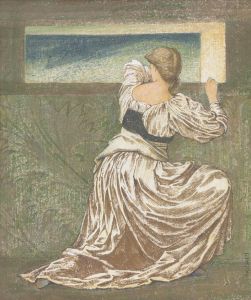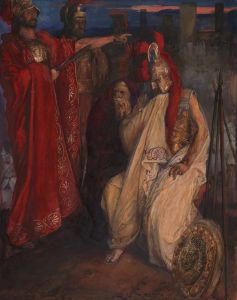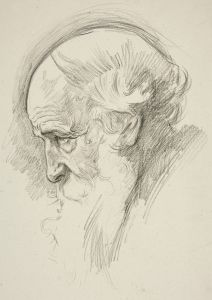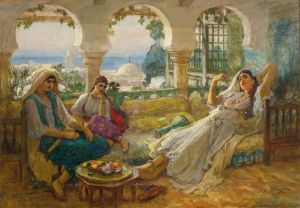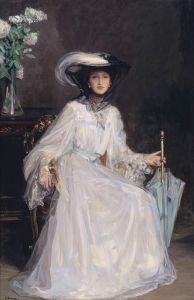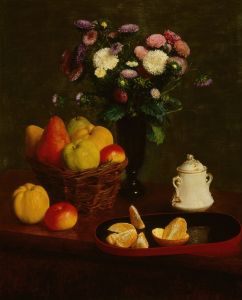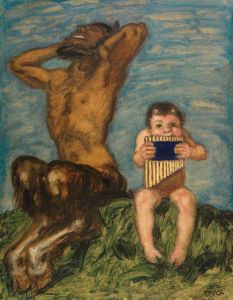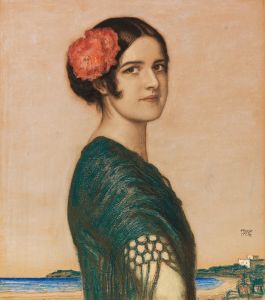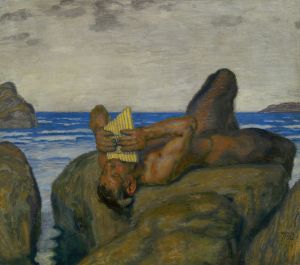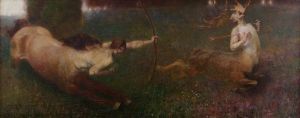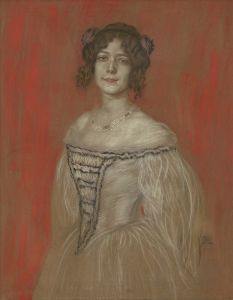
Portrait der Tochter Mary
A hand-painted replica of Franz von Stuck’s masterpiece Portrait der Tochter Mary, meticulously crafted by professional artists to capture the true essence of the original. Each piece is created with museum-quality canvas and rare mineral pigments, carefully painted by experienced artists with delicate brushstrokes and rich, layered colors to perfectly recreate the texture of the original artwork. Unlike machine-printed reproductions, this hand-painted version brings the painting to life, infused with the artist’s emotions and skill in every stroke. Whether for personal collection or home decoration, it instantly elevates the artistic atmosphere of any space.
Franz von Stuck was a prominent German painter, sculptor, and architect, known for his significant contributions to the Symbolist movement in the late 19th and early 20th centuries. Among his diverse body of work, the painting "Portrait der Tochter Mary" stands out as a notable example of his portraiture, capturing a personal and intimate aspect of his life.
"Portrait der Tochter Mary" is a depiction of Stuck's daughter, Mary, and is characterized by the artist's distinctive style that combines realism with a subtle touch of symbolism. The painting reflects Stuck's mastery in capturing the essence and personality of his subject, a skill that made him one of the leading portraitists of his time. The portrait is believed to have been painted in the early 20th century, during a period when Stuck was at the height of his artistic career.
In this portrait, Stuck employs a muted color palette, which is typical of his work, to create a serene and contemplative atmosphere. The use of light and shadow is particularly noteworthy, as it highlights the delicate features of Mary's face, bringing a sense of depth and dimension to the painting. Stuck's attention to detail is evident in the intricate rendering of textures, from the softness of Mary's hair to the subtle folds of her clothing.
The composition of the portrait is carefully balanced, with Mary positioned centrally, drawing the viewer's attention directly to her. Her expression is calm and introspective, suggesting a sense of maturity and poise beyond her years. This portrayal not only reflects Stuck's technical skill but also his deep affection and understanding of his daughter, capturing her likeness with both precision and warmth.
Franz von Stuck's work, including "Portrait der Tochter Mary," is often associated with the Munich Secession, an art movement that he co-founded in 1892. The movement sought to break away from traditional academic art and embraced new, innovative approaches to artistic expression. Stuck's involvement in the Secession highlights his role as a pioneer in the modern art movement in Germany, influencing a generation of artists with his unique vision and style.
The painting is part of a larger collection of Stuck's works that explore themes of mythology, allegory, and the human condition. However, "Portrait der Tochter Mary" stands out as a more personal piece, offering insight into the artist's private life and his relationship with his family. It serves as a testament to Stuck's versatility as an artist, capable of both grand, mythological compositions and intimate, personal portraits.
Today, Franz von Stuck's legacy continues to be celebrated in art history, with his works displayed in museums and collections around the world. "Portrait der Tochter Mary" remains an important piece within his oeuvre, exemplifying his skill in portraiture and his ability to convey deep emotional resonance through his art.





